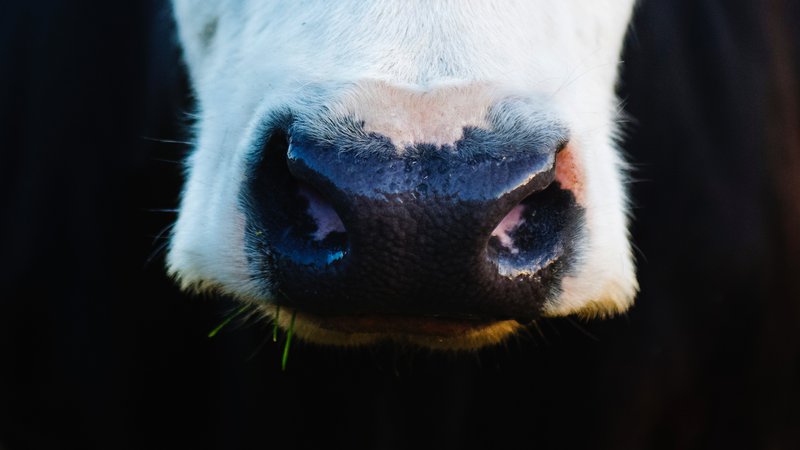COVID-19 and a shifted perspective on infectious farm animal disease research

- bclark
- 22 May 2020
COVID-19 brought an immediate end to the on-farm fieldwork for the social science cluster. The team’s discussions around biosecurity and disease modelling now extends to their own lives, and not just those of the farmers and the animals they would speak to on fieldwork visits. Here, social scientist Lewis Holloway discusses how the biosecurity measures imposed as a result of the COVID-19 lockdown have shifted thinking on the project’s research topic.
Conversations on infectious diseases and measures for controlling them have been inescapable for the past few months as COVID-19 spread across the globe. But in our case, these have been our almost daily focus for the past two years as we look to explore why certain endemic diseases, in our case Bovine Viral Diarrhoea (BVD) persist in cattle in the UK.
Making life safe
BVD, like COVID-19, is a viral disease whose effects may vary in severity. My thinking on BVD is influenced by discussions of biosecurity, a phrase suggesting measures for trying to ‘make life safe’. Biosecurity involves anticipating what threats to life might occur, being prepared to respond to their occurrence, and being ready to make interventions to reduce the effects. Discussion of biosecurity has described three overlapping ways of attempting to make life safe. Although these were originally conceived in relation to protecting of human life, they, and the concept of biosecurity, have more recently tended to be associated with attempts to secure animal life. They are, first, exclusion (preventing the ill moving into a space); second, inclusion (quarantining the ill within a space); and third, normalisation (managing a disease through interventions such as vaccination).
As COVID-19 took hold, we have very rapidly seen the application of all of these modes of biosecurity, which I had been thinking about in rather abstract terms and in relation to animals, back onto our own lives in very significant and concrete ways (as emphasised by writing this article whilst locked-down in my own home). This has forced a recalibration of my perspective on animal and human infectious diseases together. We see the exclusion, inclusion and normalisation practiced by farmers in relation to their animals, being practiced by governments in relation to us through border closures, ‘social distancing’, quarantine, self-isolation, and in debates and research surrounding treatments, testing regimes, vaccination, and whether ‘herd immunity’ is possible.
(Re)gaining control
BVD is an animal disease which we have been told (e.g. by vets) should be relatively easy to eradicate through testing and/or vaccination—but it hasn’t been eradicated, it persists. We ask in our research why does it persist if it’s so easy to control? COVID-19, on a different scale and severity as far as humans are concerned, opens up those same questions: why are these things are so hard to deal with in practice?
Explaining this means thinking about the complexity of viral infections and their relationships with vulnerable bodies, the logistics of organising medical equipment and care, and the messiness of human behaviour in relation to ‘lockdown’ regimes. Exemplifying a human-animal parallel, mobility is crucial in thinking about infection. For an agricultural and food system to function people and animals must move, in ‘normal’ circumstances and even in lockdown, in order for food production to continue. But at the same time, movement and the mingling of human and animal bodies facilitates infection. In lockdown, too, addressing viral diseases in animals may be even harder as animal biosecurity and care become more challenging because of attempts to manage human biosecurity, let alone due to human illness affecting farm work.

Entangled lives
While notions of ‘One Health’ (emphasising the interconnectedness of human and animal health) might be criticised for their lack of specificity to particular situations, there is still a sense in which the parallels and interconnections between infectious disease in cows and humans suddenly become more graphic as we see them playing out in our lives in relation to something clearly much more infectious and problematic for us as humans, something shocking our healthcare, social care and political economic systems. There is a sudden brutal exposure of the entanglement of human and animal lives, not just in terms of the presumed origins of COVID-19 in ‘wild’ animals and their use as food in certain parts of the world, but in a more mundane way in terms of a heightened sense of shared embodiedness, vulnerability, and subjection to similar biosecurity measures. Our food systems and lifestyles together produce these disease risks—in livestock farming systems, and in mobile and interconnected human lives: both provide ideal viral environments.
Both COVID-19 and our research into BVD continues, albeit remotely for the latter. It will be interesting to see what further similarities between our research and the current epidemic emerge, and more broadly how human-animal relations change as the stories of both continue to play out.
This blog is adapted from an article originally published in Agriculture and Human Values by Lewis Holloway. https://doi.org/10.1007/s10460-020-10072-2